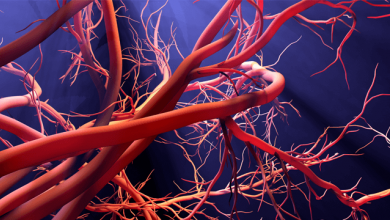Search results
PROMOTED
Start date:
Apr 08, 2024
End date:
Apr 08, 2024
At14:30 CET (08:30 EST) on Monday 8 April, in Room 2 at EHRA 2024 in Berlin, DE, Radcliffe Education is hosting a CME-accredited symposium entitled 'Advanced Approaches to Combined Epicardial and Endocardial Strategies – From New Consensus to Practice’.Under the expert moderation ofDr Hugh Calkins (Baltimore, US) and Prof Riyaz Kaba (London, UK) a leading international faculty comprising Prof…
View more
Author(s):
Kevin Cheng
,
Ranil de Silva
Added:
3 years ago
Refractory angina (RA) is defined as chronic angina-type chest pain (duration ≥ 3 months) associated with reversible ischaemia that persists despite optimal medical, interventional and surgical management.1
The clinical burden of RA is growing due to an ageing population and improved survival from coronary artery disease (CAD). Estimates suggest that in the US between 600,000 and 1.8 million…
View more
Author(s):
Kevin Cheng
,
Paul Sainsbury
,
Michael Fisher
,
et al
Added:
3 years ago
Refractory angina (RA) is conventionally defined as a chronic condition (≥3 months in duration) characterised by angina in the setting of coronary artery disease (CAD), which cannot be controlled by a combination of optimal medical therapy, angioplasty or bypass surgery, and where reversible myocardial ischaemia has been clinically established to be the cause of the symptoms.1
In clinical…
View more
Author(s):
Masatoshi Fujita
Added:
3 years ago
Despite remarkable advances in revascularisation procedures such as percutaneous coronary intervention (PCI) and coronary bypass graft surgery (CABG), a considerable number of patients with intractable angina are not candidates for these procedures. Coronary collateral circulation (CCC) is an alternative blood-conveying circuit to potentially ischaemic myocardium. Promotion of CCC is a…
View more
Management of Stable Angina
Author(s):
Udho Thadani
Added:
3 years ago
Article
‘Primary’ Microvascular Angina
Author(s):
Gaetano Antonio Lanza
,
Juan Carlos Kaski
Added:
3 years ago
Article
Author(s):
Philip A Poole-Wilson
Added:
3 years ago
Angina pectoris is a symptom that is usually, in the developed world, caused by obstruction to the coronary arteries by the enlargement of atheromatous lesions; there are other causes. The symptom can limit lifestyle, but more importantly is a repetitive reminder to the patient of the presence of heart disease, causing continual anxiety because of the belief that angina is the portent of early…
View more
Author(s):
Philip A Poole-Wilson
Added:
3 years ago
Angina pectoris is a symptom that is usually, in the developed world, caused by obstruction to the coronary arteries by the enlargement of atheromatous lesions; there are other causes. The symptom can limit lifestyle, but more importantly is a repetitive reminder to the patient of the presence of heart disease, causing continual anxiety because of the belief that angina is the portent of early…
View more
Author(s):
Thomas J Povsic
Added:
3 years ago
The potential of physiological regeneration offered by stem-cell-mediated therapy has captured the imagination of both the public and the scientific community. This is especially true for the cardiovascular and nervous systems, which have long been considered terminally differentiated and post-mitotic with minimal capacity for regeneration and repair.
While the ability of embryonically derived…
View more
Author(s):
Haider Aldiwani
,
Suzan Mahdai
,
Ghaith Alhatemi
,
et al
Added:
2 years ago













